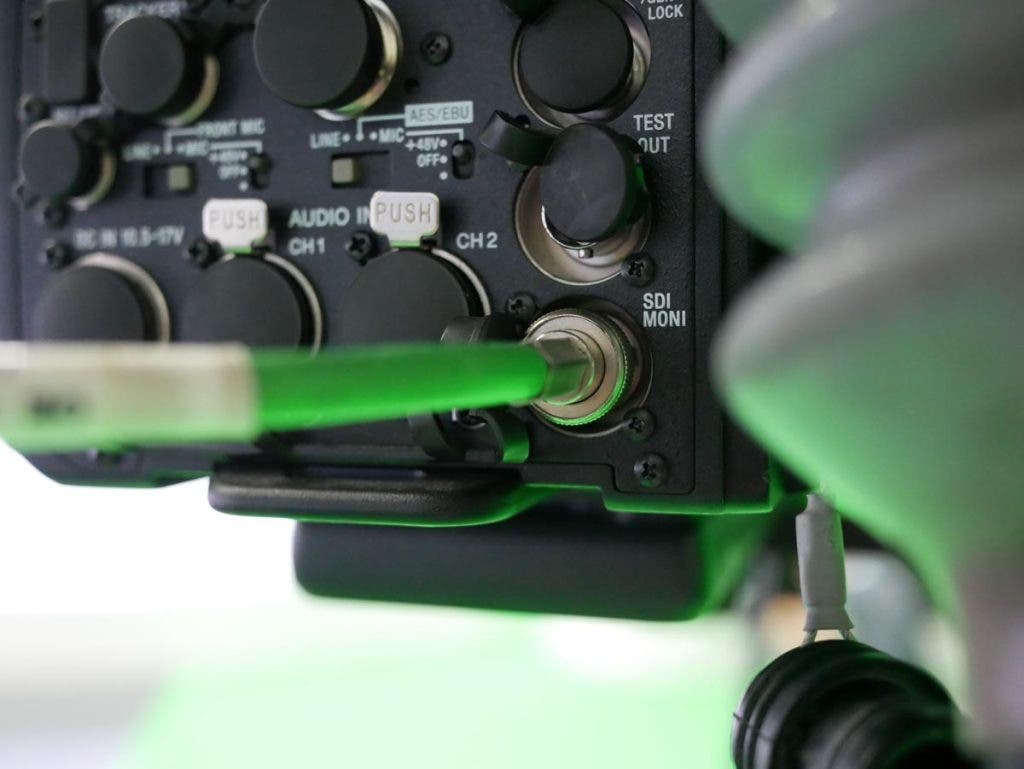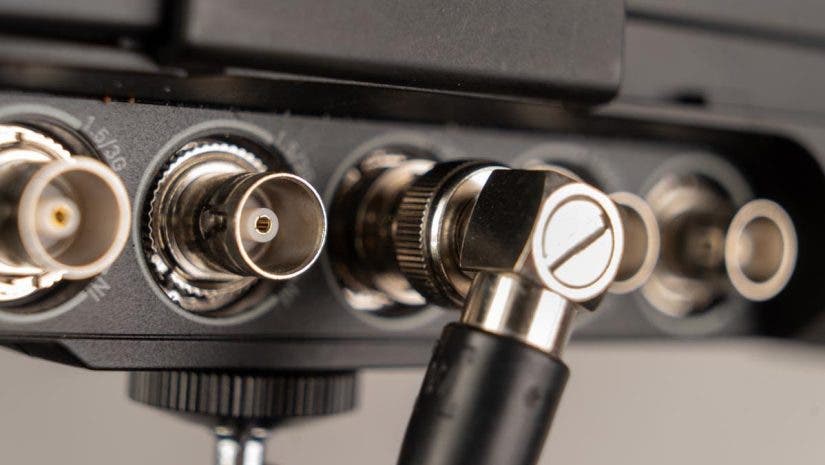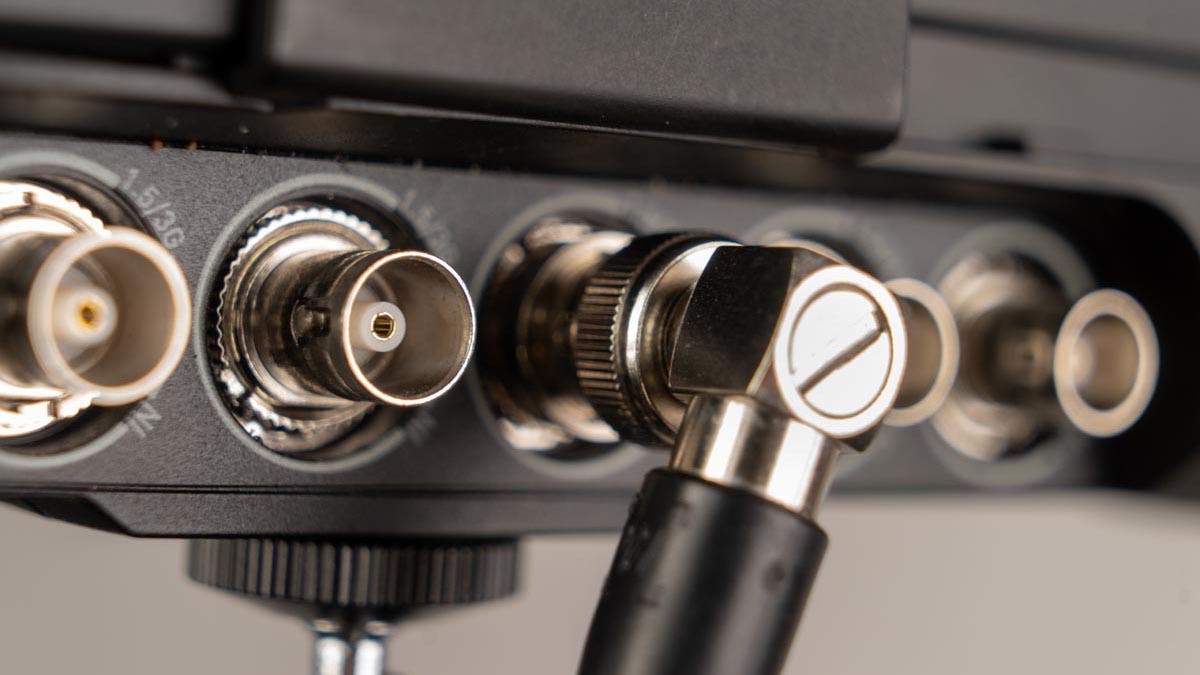Trying to figure out all the necessary cables for your video project can be a pain, even for an experienced creator. Each device can require multiple cables to transfer data, video, or audio; choosing the right cord is essential to capture the best video and audio quality. This guide will cover the significant audio and video production cables you should know about for your next project. Be sure to bookmark this one and refer to it as a crash course in video cables.
HDMI Video Cables
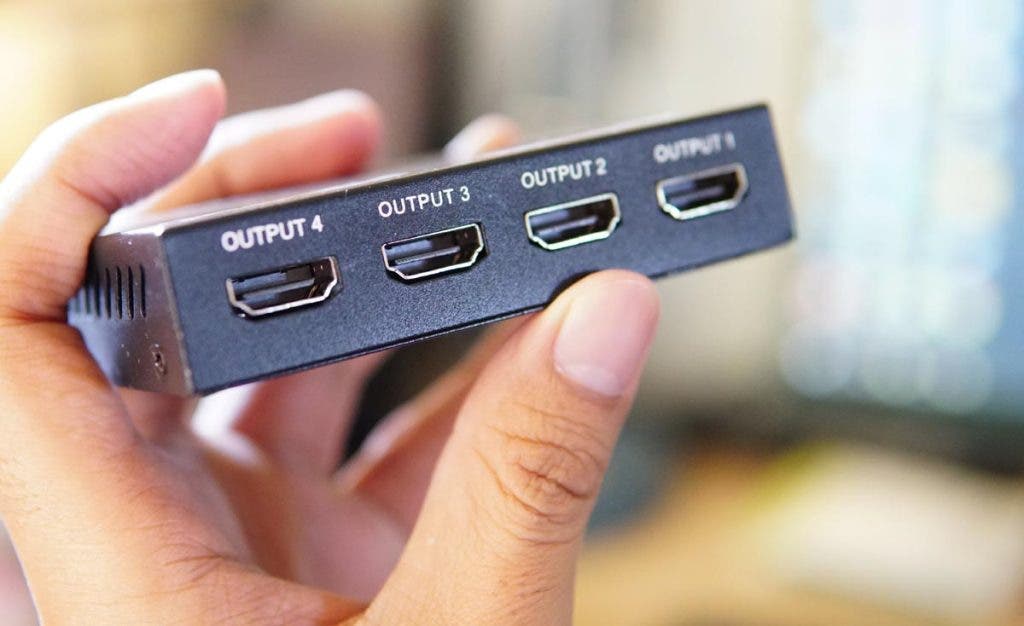
HDMI (high-definition multimedia interface) cables allow the simultaneous transmission of high-resolution video (up to 8K) and sound to a monitor. Typically, these transfer video and audio from a camera, game console, or streaming device to a monitor, such as a TV, computer screen, or projector. HDMI cables come in three different sizes: standard, mini, and micro and the connector you need will vary based on the input of the device you are connecting with. Additionally, there are numerous kinds of HDMI cables based on the speed and resolution of the media you are trying to view, outlined below.
Standard (Category 1)
A standard HDMI has a bandwidth of 4.95 GB/s and can transfer 1080i or 720p footage. If ethernet capabilities are also needed, you can get a standard cable with an ethernet channel.
High Speed (Category 2)
A high-speed HDMI cable has over twice the bandwidth of a standard, 10.2 GB/s. This cable is sufficient for 1080p footage or 4K at 30 Hz. Similar to Standard, you can also get a high-speed cable with an ethernet channel.
Category 3 (4K)
A Category 3 (4K) cable has 18 Gb/s bandwidth and can support footage up to 4K at 60 Hz.
Category 3 (8K)
Category 3 cables also come in 8K versions for those needing to display 8K footage at 60 Hz or 4K at 120 Hz. The bandwidth of a Category 3 (8K) cable is 48 Gb/s.
A great use case for HDMI would be connecting your Atomos Ninja 5.2″ HDR Monitor-Recorder.
SDI Video Cables
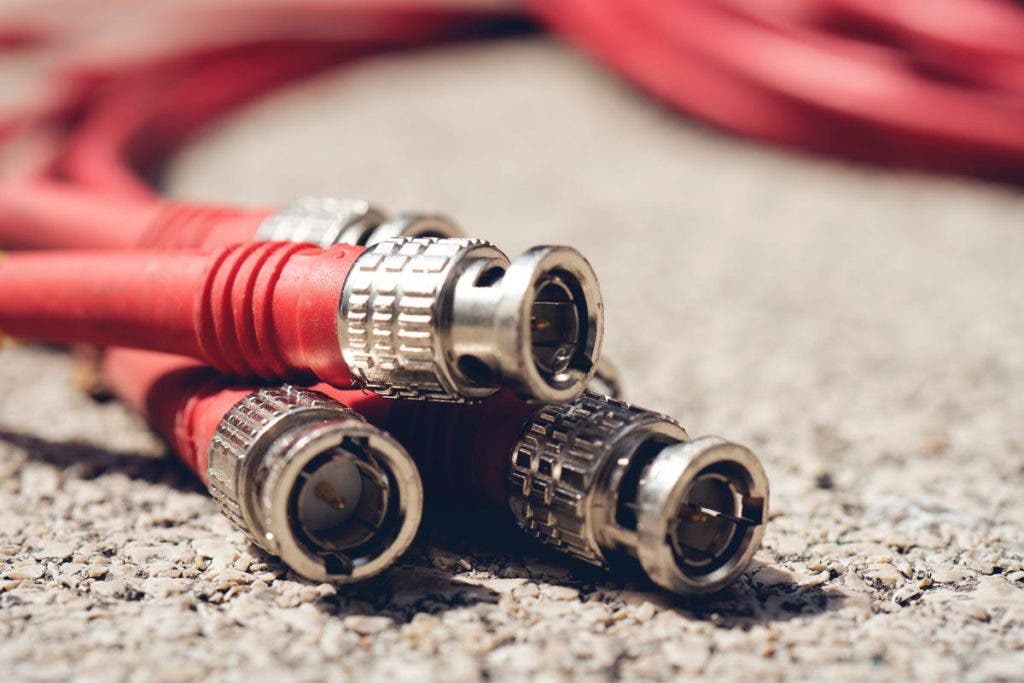
SDI (serial digital interface) cables are another popular option for transferring audio and video. These cables function similarly to HDMI cables but are more commonly seen when watching television or live shows. These cables are excellent for transmitting video and audio over long ranges, making them ideal for home settings. They’re cheaper than most other cables and have a locking mechanism in the connector. For those shooting professional video projects that need to display high-resolution footage, an SDI cable may be a better choice than an HDMI. Currently, there are seven different types of SDI cables.
SD-SDI
SD-SDI has a bit rate of 270 Mb/s and can transmit video in 480i and 576i.
HD-SDI
HD-SDI has a bit rate of 1.485 GB/s and can transmit video in 720p or 1080i.
3G-SDI
3G-SDI has a bit rate of 2.970 GB/s and can transmit video at 1080p 60p.
6G-SDI
6G-SDI has a bit rate of 6 GB/s and can transmit video at 4K 30p.
12G-SDI
12G-SDI I has a bit rate of 12 GB/s and can transmit video at 4K 60p.
24G-SDI
24G-SDI has a bit rate of 24 GB/s and can transmit video at 4K 120p or 80K 60p.
48G-SDI
48G-SDI has a bit rate of 48 GB/s and can transmit video at 8K 120p.
Use super fast 12G-SDI on your RED Digital Cinema KOMODO-X 6K S35 DSMC3 Camera.
USB Video Cables and Much More
USB cables come in many shapes and speeds and are among some of the most popular cables today due to their versatility for data transfer, charging, and power. While USB may be more versatile than many other cables on this list due to its capability to carry audio, video, data, and power in one cable, it usually isn’t the best or most reliable option if top-quality audio and video are required. Let’s briefly look at the basics when it comes to USB cables.
USB-A
USB-A cables come in five different versions: USB 1.0, 1.1, 2.0, 3.0, and 3.1. Each version has an identical connection but varies in speed, with USB 1.0 offering a 1.5 Mb/s transfer speed and USB 3.1 offering 10 GB/s.
USB-B
USB-B cables are typically used to connect printers, scanners, and external hard drives to your computer. They follow the same system as USB-A when it comes to speed.
USB-C
USB-C is the newest type of USB cable and starts at USB 3.1, matching the 10 GB/s offered by USB-A cables. However, the newest USB-C cables (commonly known as Thunderbolt) can deliver even faster speeds. Thunderbolt 3 offers 40 GB/s, and Thunderbolt 5 can provide up to 80 GB/s. Thunderbolt 4 offers the same speed as Thunderbolt 3 but has a higher minimum data transfer bandwidth than Thunderbolt 3.
Micro-USB
Micro-USB cables match the speeds of the rest of the USB ratings but generally only come in speeds up to 5 GB/s (USB 3.0). These are commonly used for charging and data transfer to and from smartphones.
Mini-USB
Mini-USB cables are used in devices that are too small for other types of USB and, therefore, will not likely be needed for video production.
You can stream directly from USB-C with many mirrorless cameras, such as the Sony Alpha a7R V.
XLR Cable
Most studio microphones require an XLR (external line return) cable, which transmits audio signals from a microphone from your microphone to another professional audio device. These cables are excellent for carrying audio because they are balanced with three wires, which cancels out interference signals. While these cables come in 3, 4, 5, 6, and 7-pin configurations, you’ll generally only find 3 and 7-pin XLR cables on studio microphones. Let’s review these two different kinds of XLR cables.
3-Pin
The 3-pin XLR is by far the most popular XLR cable, and many consider it the industry standard for professional-quality microphones. You can also use 3-pin XLR cables as speaker cables, making them highly versatile for all things audio.
7-Pin
7-Pin XLR Cables are another type of XLR cable, but these are only used in tube condenser microphones.
Many Professional Shotgun Microphones use XLR connections, such as the Sennheiser MKE 600 Shotgun Microphone.
Audio Jack Cable
TS (Tip-sleeve), (TRS) tip-ring-sleeve, and (TRRS) tip-ring-ring-sleeve cables are the three main types of audio jack connectors. These cables commonly transfer audio from a source to a camera, stereo, or recording device.
TS Cable
Tip-sleeve cables are typically used for mono signals and are the most common type of audio jack cable.
TRS Cable
Tip-ring-sleeve cables can transmit mono and stereo signals and eliminate noise, making them a popular choice for videographers.
TRRS Cable
Tip-ring-ring sleeve cables can transmit mono, stereo, and mic signals, making them a popular choice for smartphones and other devices where audio with a stereo left and right signal and a microphone signal is required.
Even wireless headphones like the Bose QuietComfort Ultra Wireless Noise Cancelling Over-Ear Headphones offer an audio jack connection option.
BNC Video Cables
BNC Cables are commonly used for video and audio transmission. They provide a secure connection with the BNC locking connector and have low loss, making them an excellent choice for radio, television, and commercial computer networks. While not as popular as they once were, these cables are still used today in commercial situations. Cinema cameras such as the Canon EOS C80 use BNC connectors.
Picking the right cable for the job can be a headache, but hopefully, this guide will help you understand some of the most common cables you’ll need for video and audio production.
